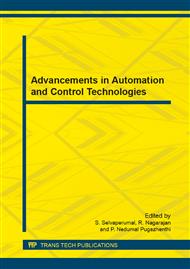p.627
p.632
p.638
p.644
p.649
p.655
p.661
p.668
p.673
Composite Material Selection Using Multi Criteria Decision Making for Automobile Torsion Bar
Abstract:
Automotive components made from composite materials can result in significant weight savings over steel and Aluminum. The main purpose of this research is to study about the selection of suitable composite material for automobile torsion bar which possesses good strength to weight ratio and yield considerable weight savings. This paper involves identification of potential composite materials, selection of evaluation criteria, use of fuzzy theory to quantify criteria values under uncertainty and application of fuzzy Linguistics to evaluate and select the best material for replacing conventional steel material with composite material used in automobile torsion bar. The strength of the proposed paper is the ability to deal with uncertainty arising due to the lack of real data in material selection for replacing the conventional material. Keyw ords:- Composite material, Incomplete linguistic preference relations, AHP, Decision analysis, Consistent fuzzy preference relations, Multi-criteria decision making
Info:
Periodical:
Pages:
649-654
Citation:
Online since:
June 2014
Authors:
Price:
Сopyright:
© 2014 Trans Tech Publications Ltd. All Rights Reserved
Share:
Citation:


